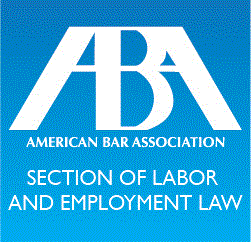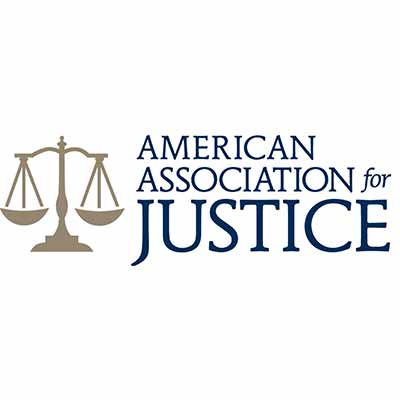Know Your Third Party Employment Rights: A Cautionary Tale for Employees and Employers
As one employer recently found out, neither "primary" nor "secondary" employers may retaliate or discriminate based on FMLA protected conduct in a joint employment setting.
A recent fourth U. S. Circuit Court of Appeals decision addressing primary and secondary employer responsibilities under the Family and Medical Leave Act (FMLA) brings into question: Who's really responsible for the proper implementation of these important employee rights in the setting of joint employment?
In the case of Quintana v. City of Alexandria, No. 16-1630 (4th Cir., June 6, 2017), The fourth US Circuit Court of Appeals reversed the lower court's decision on summary judgement and found that the plaintiff, had provided strong evidence that the city of Alexandria, Virginia was her primary employer despite the fact that it had engaged a third-party administrator and staffing company to administer the payroll for her position.
Facts of the Case
The plaintiff worked for the city of Alexandria for approximately a year when her employer engaged a third-party administrator and staffing company, Ranstad, to administer payroll for her position.
Unlike some employers who simply make this change administratively, the facts indicate that the city advised the plaintiff that Ranstad was now her employer. That said, most aspects of her job remained the same.
Thereafter, the Plaintiff's husband became seriously ill, and she requested time off.
Allegedly, her supervisor told her that she could take three months leave without losing her job in accordance with the FMLA. The facts indicate that the plaintiff then requested FMLA forms from the city and informed the staffing company of her leave.
The plaintiff claims that the city never provided her with the forms, but that she took leave anyway in reliance upon her supervisor's permission.
You guessed it, this is where the facts turned ugly. When the plaintiff contacted her employer the next week to provide an update regarding her husband's condition and her leave status, she was advised that because the city hadn't heard from her in more than a week, she had been replaced. (Lesson: If in doubt, before firing an employee for no show, speak to her supervisor or pick up the phone folks!)
The plaintiff alleges she then requested reinstatement and/or alternative employment several times from both the city and the staffing company, to no avail.
It was in this setting that she brought suit for her damages in District Court, alleging violation of FMLA to include retaliation.
Upon motion for summary judgment, her claims against the city were dismissed, however, when the court found that Alexandria was not her "primary" employer.
What's important here is not so much that the District Court found Ranstad to be the primary employer, although that conclusion was reversed by the U.S. Circuit Court. Instead, the significance of this decision may be in the fact that the court assumed that where the city was not the primary employer, the plaintiff did not have a case.
The plaintiff, eventually entered into a settlement agreement with the third-party staffing company, but she appealed the summary judgment order for the city.
It was this decision that the Fourth Circuit reversed, remanding the case for reconsideration.
The Appeal
In part one of its decision, considering the facts in a light most favorable to the plaintiff, the appeals court found that the employee had sufficiently alleged that the city was in fact, her primary employer.
In coming to this conclusion, the court looked to the factors laid out in the department of labor's FMLA regulations and found that assuming the plaintiff's allegations to be true, the city of Alexandria had maintained and exercised significant control over the plaintiff's employment, such that it could be considered the primary employer in the joint employment relationship.
What is perhaps most interesting however, is that the court took this analysis one step further and found that even if the city was the secondary employer, it could still be liable for FMLA violations.
The plaintiff had asserted that the city took action to approve her leave and that she acted in reliance upon this approval when she took time off to be with her seriously ill husband. Assuming this to be true, the court found that even if the city was NOT the primary employer, by approving her leave when it had no authority to do so as a secondary employer, The city "… could have interfered with the right to seek leave from Ranstad."
The court went on to conclude that the city's alleged admission that it fired the plaintiff as a result of her leave could establish sufficient basis to allow the plaintiff to continue with her retaliation claim.
So, here's the big news:
According to the court, "Neither primary nor secondary employers may retaliate or discriminate based on FMLA-protected conduct"
Therefore, while this case started out as an analysis regarding what constitutes a primary and secondary employer in the case of joint employment, it ended up being a decision that draws into question previously assumed responsibilities (and therefore liabilities), of primary and secondary employers in a joint employment setting.
In fact, the very next day after the court's decision in this case, the Department of Labor rescinded its administrator’s interpretation on joint employment.
Bottom line-
Classification as a secondary employer in a joint employment relationship is not sufficient to preclude liability under the Family Medical Leave Act.
Employers cannot assume that they are exempt from responsibility for properly implementing family medical leave simply because they have entered into a joint employment agreement with a third-party administrator or staffing agency.
In assessing liability, it seems the court may apply a two-step analysis which begins, but does not end, with a determination as to which of the two joint employers is the primary employer.
In this analysis, the court will consider the relative authority and responsibility to hire and fire, to assign or place the employee, to make payroll decisions, and provide employee benefits.
However, as in the case of the fourth circuit decision, the analysis may not end there. The court may also consider the circumstances surrounding the alleged violation of family medical leave to consider whether, despite the employer’s primary or secondary status, it acted in violation of the law.
Cautious employers have always been skeptical about the ability to insulate themselves from liability under various employment laws, simply by virtue of engaging a third-party administrator or staffing agency. That said, in the setting of the FMLA there was some reliable basis for the belief that where there was a joint employment relationship involving a staffing agency, the agency would most commonly be considered the primary employer.
See DOL Fact Sheet 28N: Joint Employment in Primary and Secondary Employer Responsibilities under the Family and Medical Leave Act.
In the wake of this Fourth Circuit decision, employers who relied on that rule of thumb may want to rethink their perception as to potential responsibility for their staffing agencies' errors in implementing this important employee benefit.
Need advice from an employment lawyer? Contact Rice Law Office, PLLC.






